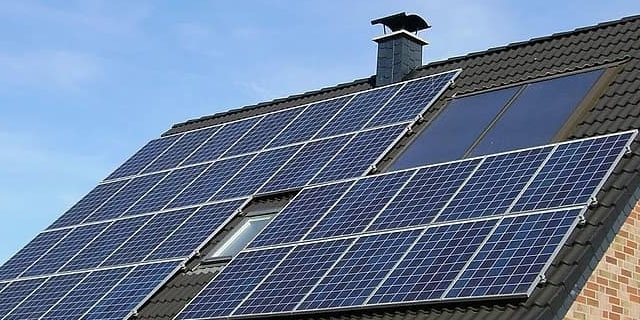
Monocrystalline Silicon Photovoltaic Modules
Monocrystalline silicon photovoltaic modules, also known as monocrystalline solar panels, are a type of solar panel that uses high-purity, single-crystal silicon to convert sunlight into electricity. Monocrystalline silicon is produced by growing a single, large crystal of silicon in a controlled environment, which results in a highly uniform and efficient material for solar cell production.
The basic working principle of monocrystalline silicon photovoltaic modules is the same as other types of solar panels, where sunlight is absorbed by the solar cells, which then generate an electric current. The electricity generated by these modules can be used for a variety of applications, from powering small electronic devices to supplying electricity to homes, businesses, and even entire communities.

Monocrystalline silicon photovoltaic modules are popular due to their high efficiency, durability, and long lifespan. They are known for their uniform appearance, with a dark, almost black color and a uniform texture. They are also able to perform well in low-light conditions, making them a good choice for areas with less sunlight.
In recent years, the cost of producing monocrystalline silicon photovoltaic modules has decreased, making them more affordable and accessible to a wider range of consumers. As a result, they have become increasingly popular in residential and commercial applications, as well as in large-scale solar farms and other renewable energy projects.
Working Principle
The working principle of monocrystalline silicon photovoltaic modules is based on the photovoltaic effect, which is the process by which light is converted into electricity. The solar cells in the module are made of high-purity silicon, which is a semiconductor material that can conduct electricity under certain conditions.
When sunlight strikes the surface of the solar cell, it is absorbed by the silicon atoms, which then release electrons. These free electrons move around in the silicon crystal and can be collected by the metal contacts on the top and bottom of the cell. This creates an electric current that can be used to power electrical devices or stored in a battery.
The top layer of the solar cell is treated with a thin layer of an anti-reflective coating, which helps to maximize the amount of sunlight that is absorbed by the silicon crystal. The bottom layer of the cell is also coated with a metal grid that helps to collect the free electrons and transfer them to the electrical circuit.
The solar cells in a monocrystalline silicon photovoltaic module are wired together in series, which means that the positive terminal of one cell is connected to the negative terminal of the next cell. This creates a higher voltage output and allows the module to generate more power.
Overall, the working principle of monocrystalline silicon photovoltaic modules is a simple and efficient process that enables sunlight to be converted into usable electricity. With advancements in technology and manufacturing processes, monocrystalline silicon photovoltaic modules are becoming more efficient and affordable, making them a popular choice for renewable energy applications.
Types of Monocrystalline Silicon Photovoltaic Modules
Following are different types of Monocrystalline Silicon Photovoltaic Modules:
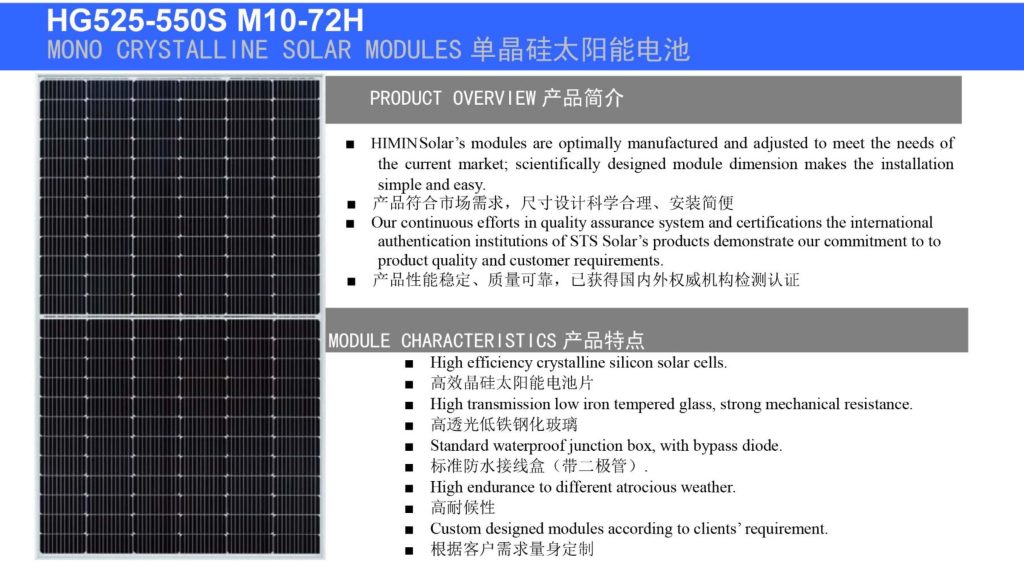
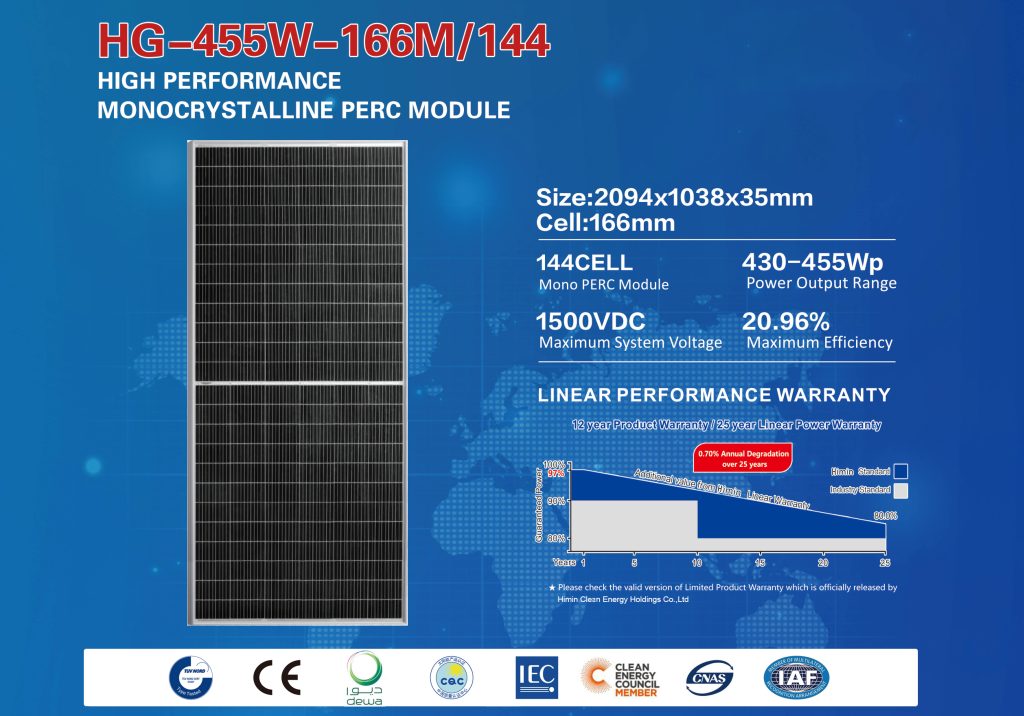
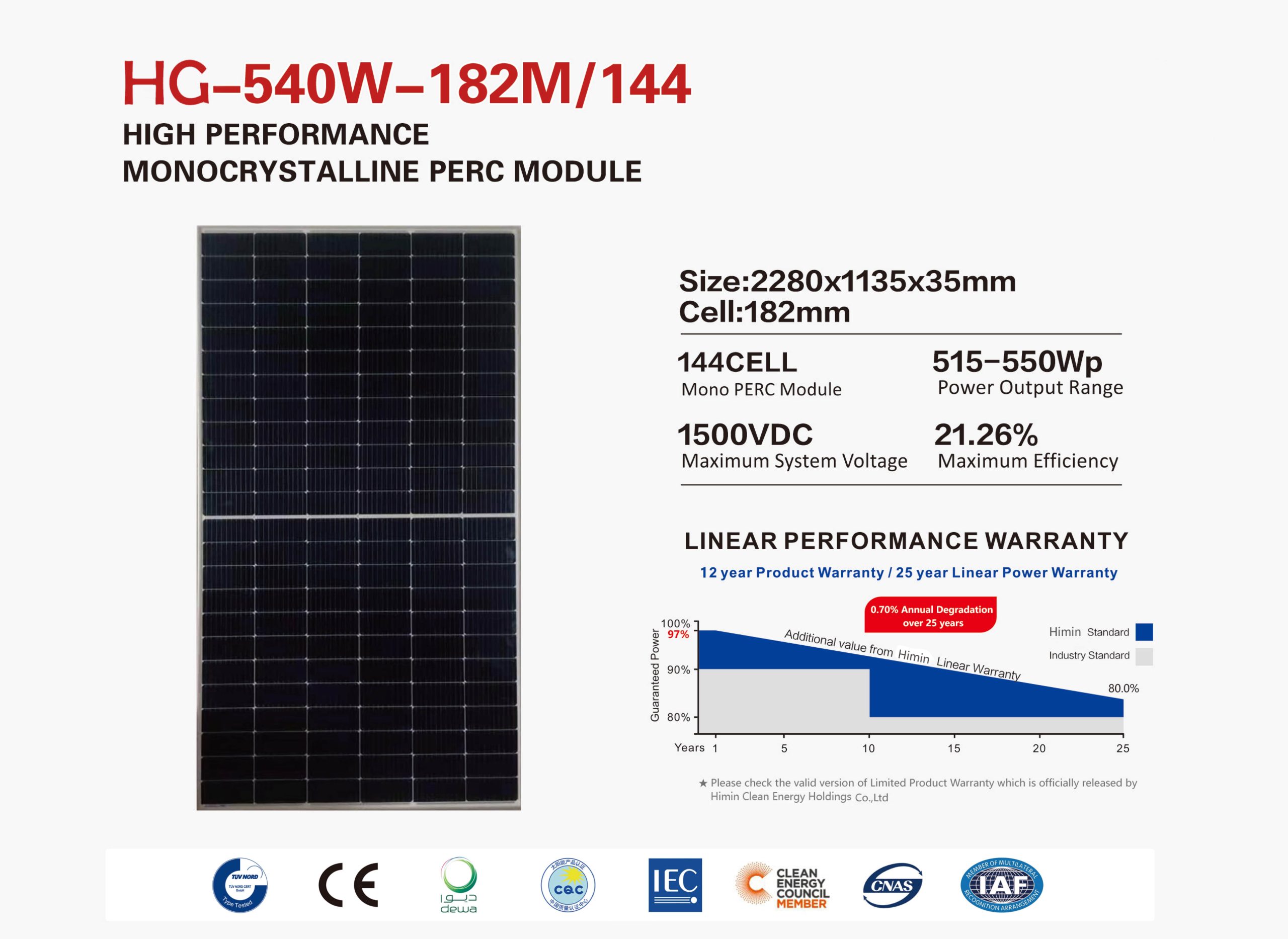
Production Process
The production process of monocrystalline silicon photovoltaic modules can be broken down into several steps:
Silicon Ingot Production: The first step in the process is the production of a large silicon ingot, which is a cylindrical piece of silicon that will be sliced into wafers. The silicon is melted and then solidified in a controlled environment to produce a single crystal. This crystal is then carefully cut and polished to create the ingot.
Wafer Slicing: The silicon ingot is sliced into thin wafers using a diamond saw. These wafers are typically around 200 microns thick.
Cell Production: The wafers are then processed to create solar cells. This involves cleaning the wafers, applying a thin layer of anti-reflective coating, and then doping them with impurities to create a p-n junction. This p-n junction is what allows the solar cell to generate electricity when exposed to sunlight.
Cell Interconnection: Once the solar cells are produced, they are then interconnected using conductive wire ribbons. This is done to create a larger solar panel that can generate more electricity.
Encapsulation: The solar cells are then encapsulated in a protective layer of EVA (ethylene-vinyl acetate) and a layer of tempered glass. This helps to protect the cells from moisture and other environmental factors.
Module Assembly: The final step in the production process is the assembly of the solar modules. This involves connecting the solar cells together, adding a frame to hold the cells and glass in place, and adding electrical connections to allow the module to be connected to an electrical system.
Overall, the production process of monocrystalline silicon photovoltaic modules requires a significant amount of time and resources, but the resulting solar panels are highly efficient and durable. With advancements in technology and manufacturing processes, the cost of producing these modules has decreased, making them a more affordable option for consumers and businesses looking to invest in renewable energy.
Advantages
There are several advantages to using monocrystalline silicon photovoltaic modules:

High Efficiency: Monocrystalline solar panels are known for their high efficiency, with some models having an efficiency rating of up to 22%. This means that they can convert a higher percentage of sunlight into usable electricity, resulting in a higher power output.
-
Durability: Monocrystalline solar panels are highly durable and can last for up to 25 years or more. They are designed to withstand harsh weather conditions, including rain, snow, and extreme temperatures.
-
Uniform Appearance: Monocrystalline solar panels have a uniform appearance, with a dark, almost black color and a consistent texture. This makes them a popular choice for residential and commercial installations where aesthetics are important.
-
Space Efficiency: Monocrystalline solar panels are also space-efficient, as they can produce a higher power output per square foot compared to other types of solar panels. This makes them a good option for installations with limited space.
-
Low-Light Performance: Monocrystalline solar panels are able to perform well in low-light conditions, making them a good choice for areas with less sunlight.
-
Long Lifespan: Monocrystalline solar panels have a long lifespan and can last for up to 25 years or more, making them a good investment for homeowners and businesses.
Overall, monocrystalline silicon photovoltaic modules are a reliable and efficient source of renewable energy. They are a popular choice for residential and commercial installations and are becoming increasingly affordable as the cost of production continues to decrease.
Applications
Monocrystalline silicon photovoltaic modules are used in a variety of applications where renewable energy is needed. Here are some common applications:
Residential: Monocrystalline solar panels are commonly used in residential settings to provide energy for homes. They can be installed on rooftops or on the ground, and can be used to power household appliances, lighting, and more.
Commercial: Monocrystalline solar panels are also used in commercial settings to provide energy for businesses. They can be used to power office buildings, warehouses, and other commercial facilities.
Utility Scale: Monocrystalline solar panels can also be used in large utility-scale solar power plants to generate electricity for the grid.
Remote Locations: Monocrystalline solar panels are a popular choice for powering remote locations such as off-grid cabins, remote telecom sites, and remote industrial sites.
Agriculture: Monocrystalline solar panels can be used to power irrigation systems, livestock water systems, and other agricultural applications.
Transportation: Monocrystalline solar panels can be used to power electric vehicles, including cars, buses, and trains.
Overall, monocrystalline silicon photovoltaic modules are a versatile and reliable source of renewable energy that can be used in a wide range of applications. As the demand for renewable energy continues to grow, the use of monocrystalline solar panels is expected to increase.
Polycrystalline Silicon Photovoltaic Modules
Polycrystalline silicon photovoltaic modules are a type of solar panel that is made from polycrystalline silicon. Polycrystalline silicon, also known as multicrystalline silicon, is made up of multiple small silicon crystals that are fused together to form a larger crystal. This is in contrast to monocrystalline silicon, which is made up of a single crystal.
Polycrystalline silicon solar panels are known for their high efficiency and reliability, and they are a popular choice for residential and commercial installations. They are also becoming increasingly affordable as the cost of production continues to decrease.

Polycrystalline solar panels are made using a similar process to monocrystalline solar panels. The process involves growing silicon crystals, cutting them into wafers, and then processing the wafers to create solar cells. The cells are then interconnected and encapsulated in a protective layer of EVA and tempered glass to create the solar module.
Overall, polycrystalline silicon photovoltaic modules are a reliable and efficient source of renewable energy that can be used in a variety of applications. They offer many of the same benefits as monocrystalline silicon solar panels, but at a more affordable price point.
Working Principle
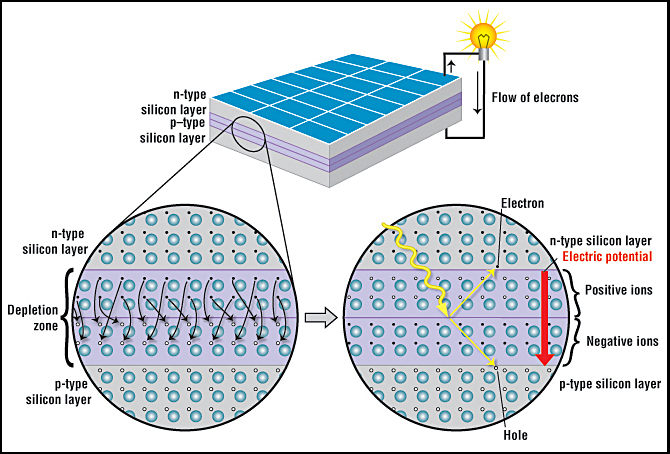
The working principle of polycrystalline silicon photovoltaic modules is similar to that of monocrystalline silicon solar panels. Both types of solar panels convert sunlight into electricity using the photovoltaic effect.
The photovoltaic effect occurs when photons from the sun’s rays strike the surface of the solar panel, knocking electrons free from the atoms in the solar cells. These free electrons create an electrical current that can be harnessed to generate electricity.
In polycrystalline silicon solar panels, the solar cells are made up of multiple small silicon crystals that are fused together to form a larger crystal. These cells are then interconnected and encapsulated in a protective layer of EVA and tempered glass to create the solar module.
When sunlight hits the surface of a polycrystalline silicon solar panel, it is absorbed by the silicon cells and generates an electrical charge. The charge is then collected by a grid of conducting material on the surface of the solar cells, which then channels the electricity to the output terminals of the solar panel.
The electricity generated by polycrystalline silicon solar panels can be used to power homes, businesses, and other applications, or it can be fed into the grid for use by others. Overall, the working principle of polycrystalline silicon photovoltaic modules is based on the photovoltaic effect, which allows them to convert sunlight into usable electricity.
Production Process
The production process of polycrystalline silicon photovoltaic modules is similar to that of monocrystalline silicon solar panels. Here are the basic steps:
-
Silicon Ingot Production: The first step in the production process is the production of silicon ingots. This involves melting high-purity polycrystalline silicon in a furnace and then pouring the liquid silicon into molds to form solid ingots.
-
Wafer Production: The next step is to cut the silicon ingots into thin slices, known as wafers. This is typically done using a wire saw, which slices the ingot into thin wafers.
-
Surface Treatment: The wafers are then treated to remove any impurities and create a uniform surface that is optimal for solar cell production.
-
Solar Cell Production: The treated wafers are then used to create solar cells. This involves depositing a layer of phosphorus on one side of the wafer and a layer of boron on the other side, creating a p-n junction. This junction creates an electric field that separates the electrons and holes generated by sunlight.
-
Module Assembly: The solar cells are then interconnected to create a module. This involves soldering the cells together using conductive metal strips and encapsulating them in a protective layer of EVA (ethylene vinyl acetate) and tempered glass.
-
Quality Control: Throughout the production process, the solar cells and modules are rigorously tested to ensure that they meet industry standards and are free from defects.
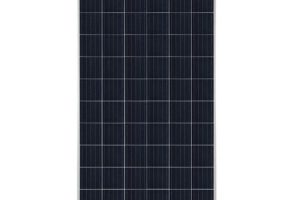
Overall, the production process of polycrystalline silicon photovoltaic modules involves several steps, from ingot production to module assembly.
Each step is critical to ensuring that the final product is efficient, reliable, and meets industry standards.
Advantages
Polycrystalline silicon photovoltaic modules offer several advantages over other types of solar panels. Here are some of the main advantages:
High Efficiency: Polycrystalline silicon solar panels are highly efficient, with an average efficiency of around 15-17%. This means they are able to convert a higher percentage of the sun’s energy into usable electricity.
Cost-effective: Polycrystalline silicon solar panels are less expensive to produce than monocrystalline solar panels. This makes them a more cost-effective option for those who want to switch to solar energy.
Wide Range of Applications: Polycrystalline silicon solar panels can be used in a wide range of applications, from residential to commercial and industrial. They are versatile and can be easily integrated into existing buildings and infrastructure.
Durable and Long-lasting: Polycrystalline silicon solar panels are durable and can withstand harsh weather conditions. They are also long-lasting, with a lifespan of up to 25-30 years.
Environmentally Friendly: Polycrystalline silicon solar panels are a clean and renewable source of energy, which means they have a minimal impact on the environment. They do not produce greenhouse gases or other harmful emissions, making them an eco-friendly option.
Overall, polycrystalline silicon photovoltaic modules offer many advantages, including high efficiency, affordability, durability, versatility, and environmental friendliness. They are a great choice for those who want to switch to solar energy and reduce their carbon footprint.
Applications
Polycrystalline silicon photovoltaic modules are versatile and can be used in a wide range of applications. Here are some of the main applications:
Residential Solar Systems: Polycrystalline silicon solar panels are commonly used in residential solar systems to provide electricity for homes. They can be installed on rooftops or in yards and can help homeowners save money on their electricity bills.
Commercial and Industrial Solar Systems: Polycrystalline silicon solar panels are also used in commercial and industrial solar systems to generate electricity for businesses and organizations. They can be installed on rooftops, carports, and other structures.
Off-grid Power Systems: Polycrystalline silicon solar panels can also be used in off-grid power systems to provide electricity in remote locations where access to the grid is limited or non-existent.
Solar Streetlights: Polycrystalline silicon solar panels can be used to power solar streetlights, which are becoming increasingly popular in cities and towns around the world.
Portable Solar Chargers: Polycrystalline silicon solar panels can be used to create portable solar chargers for phones, tablets, and other devices. These chargers are convenient for outdoor activities like camping, hiking, and backpacking.
Overall, polycrystalline silicon photovoltaic modules can be used in a wide range of applications, from residential to commercial and industrial. They are a versatile and eco-friendly source of energy that can help reduce our reliance on fossil fuels and mitigate the impacts of climate change.
